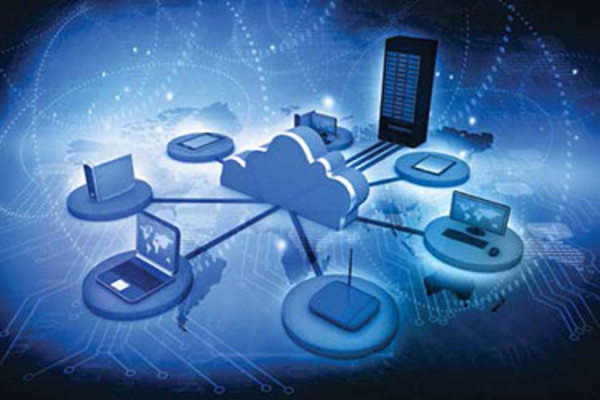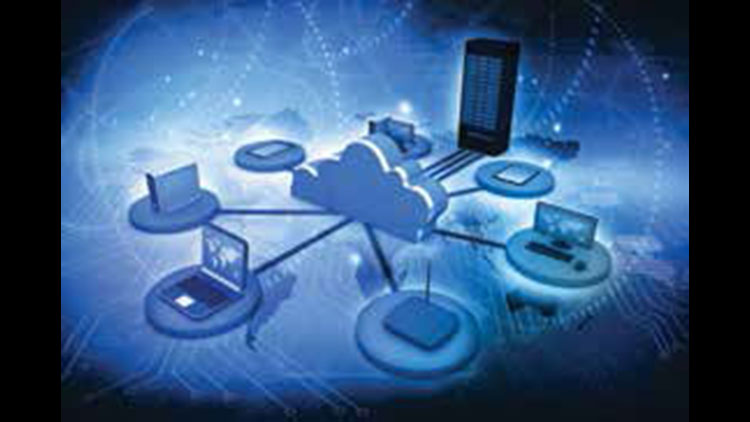For years, the AV industry has been dabbling in cloud-based AV-over-IP (AVoIP) and buying proprietary hardware that simply uses its own internal memory, processing power, and programming to do stuff for us. Those days are coming to an end very soon, though. Every manufacturer is touting how “cloud friendly,” “IT-friendly,” and “AVoIP’d” they are, but most of them aren’t. Everything will become cloud-based as long as you can use memory, processing power, and software to do whatever traditional hardware did in the past. Traditional “guzintas” and “guzowtas” like speakers, mics, encoders, decoders, will always be there, but they will be single channel, as needed, interoperable, and commoditized. Everything in the middle will go the way of mounted cavalry on the battlefield.

How can such a claim be made? Well, let’s look at DSP. There are a number of really great products on the market that we all know, love, and depend on. Are those things a box? Are they proprietary? What’s inside those boxes? Memory, processors, and code? Do other manufacturers already make cost-effective, single-channel audio “guzintas” and “guzowtas?” Do these boxes currently only work with their own brand of ancillary products? Yes to all? Okay, DSP boxes are on the cloud absorption list.
Not buying it? Let’s look at control systems, or video processing and routing. Ask the same questions from the above paragraphs about devices in these categories, and you’ll get the same answers.
The list could just go on and on and on. Think about microphones. Don’t we all already carry a pretty darn good microphone around with us everywhere we go in our phones? Why can’t we use those mics in place of ceiling mics or table mics or wireless mics? Are those mics proprietary? Do they work with other audio systems? Could they be made to work with other audio systems? Yes. Then it’s probably safe to say that we’re starting to see the beginning of the cloud commoditization of audio “guzintas” and “guzowtas.”
There’s a number of technical hurdles that will need to be surmounted in terms of the sanctity and latencies of our precious audio and video signals, though, so this process will happen slowly. But it’s safe to say that the gears are already turning, and several folks know the majority of revenue in our beloved industry is going to be moving away from margins and boxes, and converting itself over to the way software companies make their money. It could be per usage, per quantifiable data unit, per time period, or some sort of perpetual licensing strategy.
So if we carry this train of thought into modern AV design, integration, and manufacturing, what does the future look like? Who will be the winners and losers? Who knows, but there are a few recommendations that can be made to companies that want to thrive within “The Cloud” once they get absorbed:
For Manufacturers
Interoperability is key: if your solution works with other people’s solution(s), you have a better chance of being part of a future system design. No system design should be locked into one feature set or capability, ever again. Adding inputs, outputs, new audio processing—it should be as easy as a software change. There should be no rewiring needed, no hardware changes required.
Fair pricing and proper monetization: If your solution displaces thousands of dollars of hardware and labor, pricing should be such that there is extreme value. The old argument of charging for the equivalent of the displaced hardware and labor costs will be a hard pill to swallow; secure a low OPEX-type cost that focuses on long service terms, just like the cellular companies. Give users that new feature, but hold on to them.
For Integrators
Build serviceability into systems and software: for every system one designs, each remaining hardware component needs to be reachable, configurable, monitored, hard-and soft-rebootable, and serviceable remotely. If you can’t fix a problem remotely, and must send someone to a system’s site without the exact replacement part in hard, you have a design problem or you’re using the wrong software applications. That’s a design problem, believe it or not. This philosophy also buttresses the ability for integrators to better position themselves for service value amid the absorptiveness of the cloud.
For Consultants
Design systems so they can accommodate any type of software as it pertains to collaboration, videoconferencing, or audio conferencing. This space will absolutely erupt in the coming years and there will be many flavors to choose from—all of which will have varying levels of interoperability, quirkiness, end-user favor, and cost. If you have to make a hardware change to accommodate the software changes that will play out in this space, you have a design problem.
Pro Perspectives
What will the roles of hardware and software look like 10-plus years out?
Rashid Skaf, CEO, Biamp Systems
“The cloud will continue to grow in importance for professional AV applications for content distribution, storage, centralized applications, and management software. However, dedicated hardware will still exist at the edges for content ingest and presentation. The cloud won’t displace premise equipment, but it will affect its features and function. Both cloud and premise-based AV elements are necessary to deliver a professional-class collaboration experience.”
Michael Crisci, Business Development Manager, AV/IP, Atlona
“The AV industry today is in the early stages of a rapid evolution. Gazing over the solution landscape, you see an industry protecting the lineage of the multiuse black boxes and standalone software. The next 10 years, exclusive of some “Black Swan” event, is ripe for a shakeup. As legacy companies prepare, and newcomers emerge, all signs point to small form-factor, cost-effective I/O appliances. These appliances will integrate into a network and software infrastructure that will define and manage the users’ applications and experience. This will force the entire industry—from design consultancies, to integration firms, to hardware manufacturers—to up their game or look for a new line of work.”
Sumanth Rayancha, VP/CTO, PepperDash
“The next 10-plus years in AV will be about tearing down barriers through better definition and adoption of standards. We have already seen this begin through changes such as Dante audio and native interaction between traditional room video codecs and Skype for Business. The need for hardware will not go away, but an increased amount of functionality will be handled at the software layer on non-proprietary hardware.”
Trent Hayes, Director of AV Engineering, Downstream
“Obviously, video-on-demand cloud services like Netflix, Hulu, and Amazon Prime dominate a market space serving entertainment to consumers. In future commercial applications, however, I anticipate voice-driven navigational “user interfaces” hosted in the cloud and managed by corporate-specific AI services that allow presentation content to be ubiquitously routed to dynamically generated webpages, wireless displays, and colleagues’ network shares and laptops. The days of dedicated touchpanels for room control will be replaced with personalized control solutions integrated with voice-activated AI hosted in the cloud that ‘travels’ from room to room and city to city along with each user.”
Jeremy Caldera, CEO, IAS Technology
“Current trends in hardware indicate reliance on the network. We are seeing more and more audio and video over IP, and for most traditional integration firms, they are finding themselves in a period of transformation. This will be more prevalent as the industry evolves with less hardware in the mix. As hardware becomes less common, and we see more software or cloud-based solutions, the overall quality of systems will need to improve in order to ensure a consistent and reliable integrated user experience.”
David Carroll, Owner and President, David Carroll Associates
“Industry standards are finally beginning to coalesce, and with bodies such as SMPTE, NMOS, and AES delivering workable standards we are starting to see cross-manufacturer interoperability over IP. There is a long way to go, but it seems to be accelerating as there are clear benefits for all parties. At some point, we will start to see broad adoption across product types, and devices will plug-and-play together nicely. Many processing functions that were once the exclusive domain of hardware solutions will become network or cloud resources. This opens new business models such as consumption-based payment for services where we need capital investment today, such as recording, playout, transcoding, mixing and routing, etc.”
